If you look around you, innovation and technology are shaping the world we live in. Not only that, it’s moving at a phenomenal pace. Think Face IDs, driverless cars and even robots. It’s extremely exciting as it unfolds in front of us - revolutionising archaic industries and creating brand new sectors of all shapes and sizes. With all this rapid change, It makes you wonder what the next big tech breakthrough will be...?
Well, blockchain is one of these "hot" areas that has the potential to have a massive effect on the world and society as we know it. But what is a "blockchain", how does it work, and where might we see it being used? Well, we will dive into these answers in this post. Keep reading below.
Let’s Start Off With The Basics: What Does A “Blockchain” Do?
The name is quite literal. In simple terms, it’s a ‘chain of blocks’ which is a system for recording data and is stored in a distributed ledger (stored by all of the users). They’re set up in a way so that once data has been entered, it becomes extremely difficult to modify, which we will cover shortly. For now, let’s look at what exactly these "blocks" contain.

So, What Is a Block?
Each block is a representation of a transaction/event that’s taken place. A common example of when a block would be formed is when a currency or item is sent or received.
A block holds three key things:
- The details of the transaction
- A hash (which we will explain below)
- The hash of the previous block in the chain
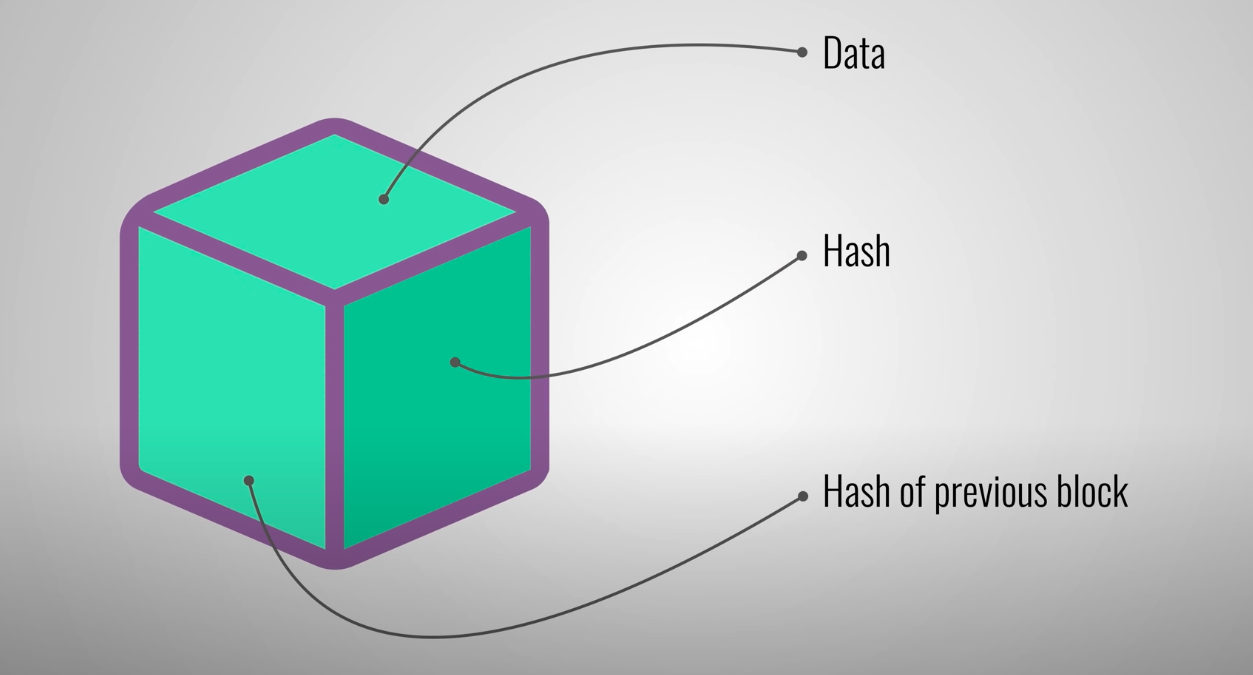
Hashes are used to identify individual blocks and the information inside them. It acts much like a digital fingerprint, as each hash is unique to a specific block. Hashes are formulated when the block is created. This is also the system that creates the sequence of the "chain". By storing the hash of the previous block, it forms an order where it points to the block prior. As you can see in the image below.
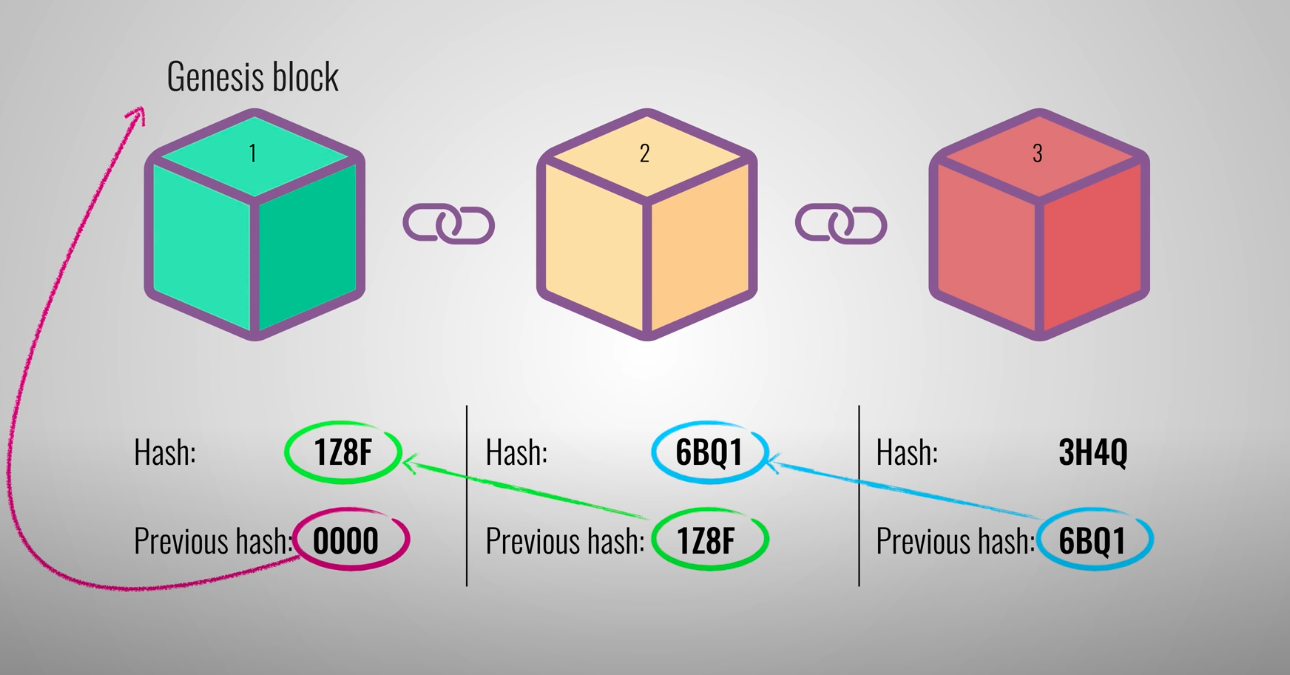
Hashes are also very useful for detecting changes made to any blocks. This is because when changes are made, it triggers a brand new hash to be generated for the block. In turn, this would invalidate all of the following blocks as they no longer store the correct hash of the previous block. Again, there is a visual representation below.
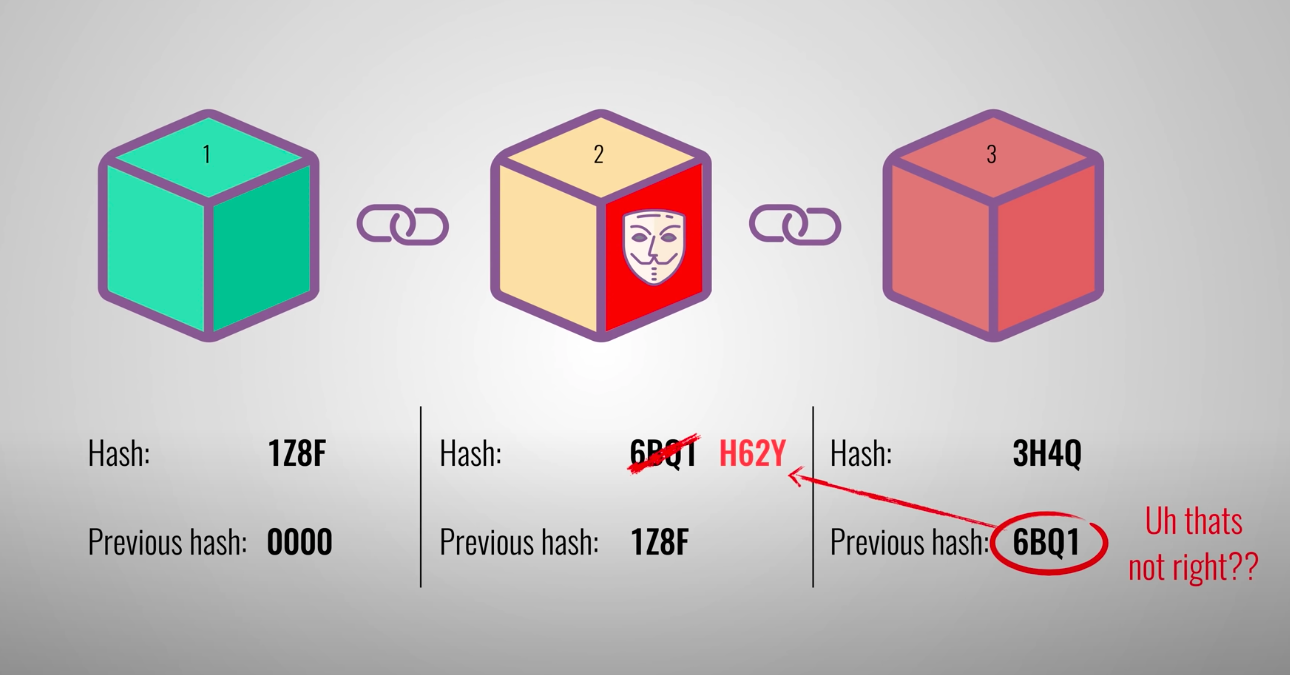
So Now We Know What A Block Is, How Are They Added To The Chain?
Well, using hashes alone is not enough to prevent block tampering from taking place. Computers in today's age are powerful enough to recalibrate the blocks/hashes back into a valid chain again. Therefore, other layers are put in place to mitigate this, one method being the use of consensus mechanisms/protocols - or in simpler words, the rules of the chain!
These protocols state the requirements/procedure for being able to validate new blocks. There are various different methods to do this. Some of the most widely used protocols are called proof-of-work and proof-of-stake; the goal of these is to increase security and incentivise the transaction validators to uphold the integrity of the network. For example, proof-of-stake requires you to deposit some value that’s locked in a "safe". When the rules are followed, you are rewarded with a currency. On the flip side, if you go against the rules by validating illegitimate blocks, your deposit can be confiscated.
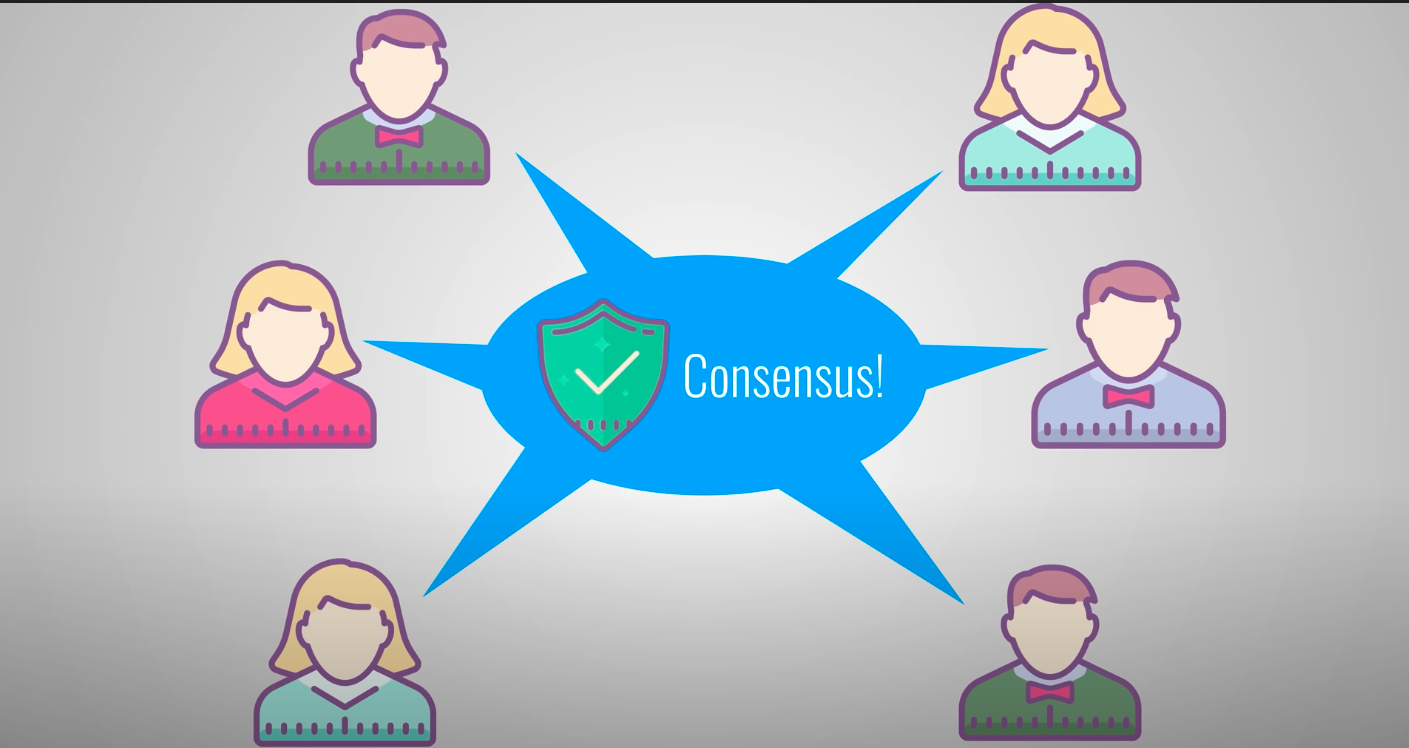
Every time a new block is formed, it’s sent out to everyone in the network for them to verify it and ensure it hasn’t been tampered with. Once the network reaches an agreement about which blocks are valid and which aren’t, those that are valid can be added to the chain and the rest are rejected.
Therefore, they are peer-to-peer networks and don’t require a centralised body to make decisions. Everyone is allowed to join and view the blocks in the chain. When someone new joins, they will receive a full copy of the chain to date, and it’s used to verify that all the blocks are still in the correct order and holding the correct data. This keeps the system transparent and everyone can be held accountable by each other.
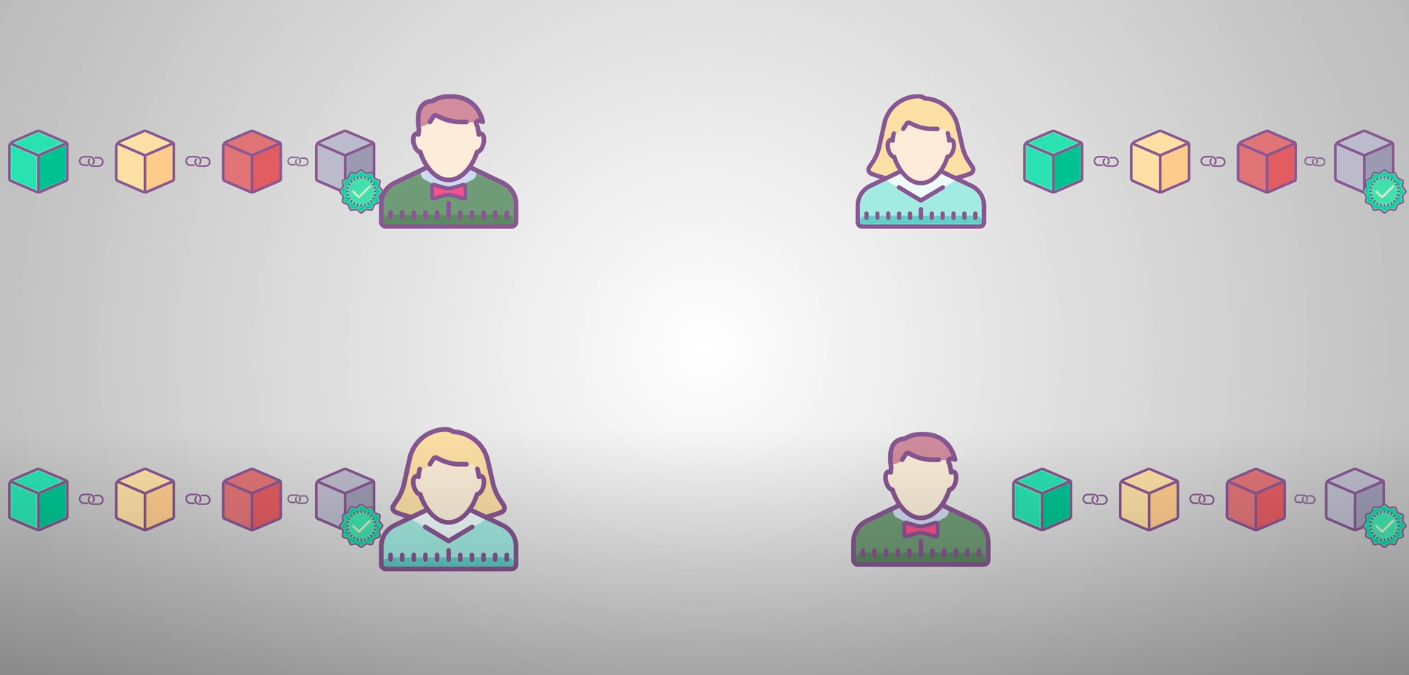
Whilst many blockchains have a focus on decentralisation and getting rid of the ‘middle-person’. There are also use cases on the private side. In these cases the blockchains are 'permissioned', meaning you can decide who can add blocks, view certain data points and make modifications. This would be much more likely inside a private/business environment, where the users are trusted. One active example today is during the supply chain process.
Interesting! Where Might We See Blockchains?
So, now we’ve got an understanding of the basics of a blockchain, let’s see where this technology might impact the real world!
There's various potential uses for blockchains - due to the fact that they can be set up in different ways with high security, transparency and are extremely difficult to manipulate. In fact, there are even some in use today...
- It’s very effective for supply chain/logistics management - due to automation, traceability, and cost improvements. BMW, Walmart & high-end clothing brands are utilising blockchain technology to closely monitor each stage of the lifecycle of their products. Verifying various components at each point in the process - such as quality and quantity. This will allow them to easily identify any issues that may be in the supply chain whilst connecting everyone involved.
- Thanks to transparency, it becomes very useful when verifying items. From making voting systems completely fair to storing important documents such as medical records, IDs, mortgage deeds, or even simply to prove ownership of something. An easy example of where this would help is to stop things like event ticket scammers, as you could see who the tickets were issued by. As a result, scammers will be prevented from stealing tens of millions of dollars through event tickets alone, as well as reducing many other serious problems caused by fraudulent activity.
- Smart Contracts. These are programmes on the blockchain that are run when predetermined conditions are met. They are typically used to automate the execution of the agreement. so that all participants can be immediately certain of the outcome, without any third party involvement or time loss. Smart contracts have various uses in the financial world, such as trading, investing, lending, and borrowing, but they also have many other uses in areas such as real estate, gaming, and healthcare.
- Finally, one of the uses I am sure you have all heard of is cryptocurrencies. Various crypto coins are attempting to re-write the financial systems in a more transparent, decentralised way where “the people are in control”. With insane amounts of money being poured into the space and coins like Bitcoin becoming trillion-dollar assets, it’s become a very interesting competitor in the financial space. Who knows what might happen!
As you can see, there are many, many uses for the blockchain and many more that may still not have materialised yet. You can find out more by clicking here!
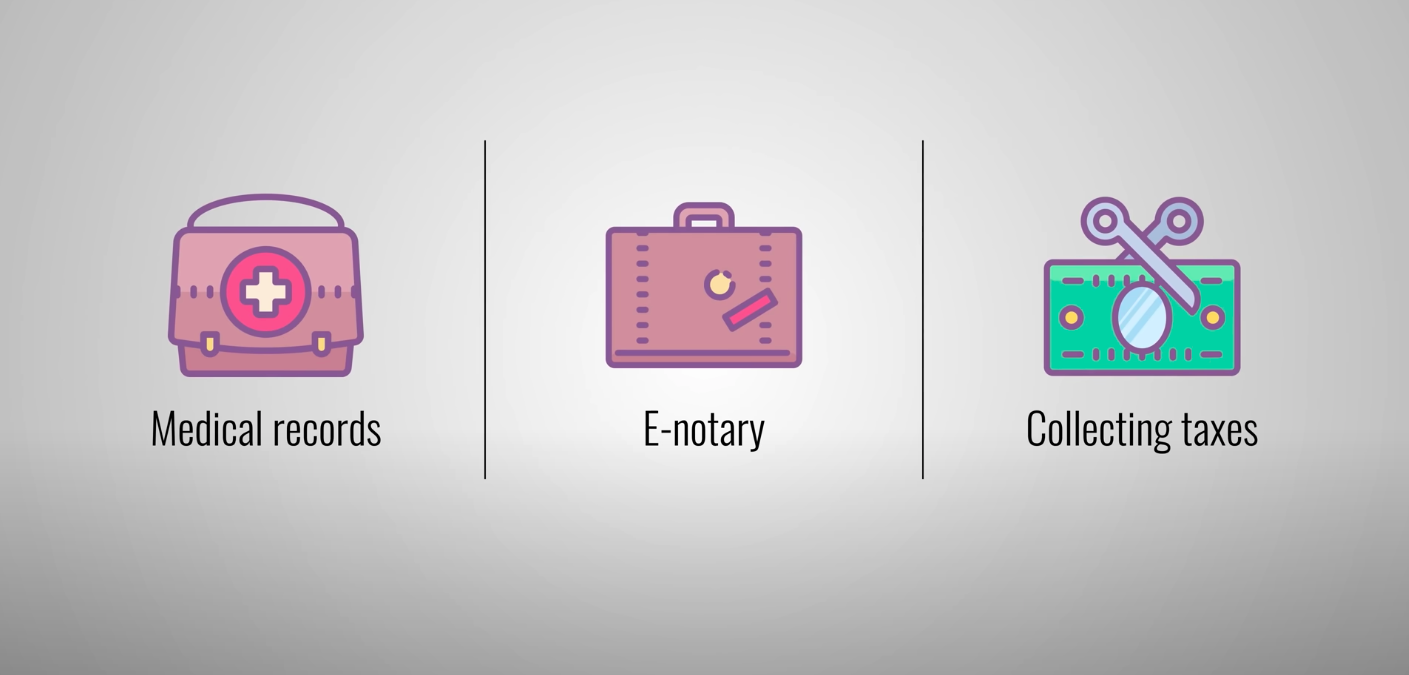
This All Seems Promising - What’s The Catch?
Even though blockchain technology does have many great potential uses, it does have its drawbacks and points that raise concerns. In many cases the things that make a blockchain so exciting, also become its downfall; especially when it comes to looking at mass adoption.
- If we look at the fact that it’s extremely difficult to modify, whilst it can be great, this also means if an incorrect transaction is validated, it can be very challenging to rectify this whilst staying decentralised. It can even result in a "hard fork", meaning that the chain is abandoned or split up, whilst a new one is taken up with a different set of rules, which can cause the team/community to split.
- Scalability and storage are other issues that many blockchains are experiencing at the moment. Since the data is stored indefinitely on all of the nodes of the network, combined with the fact that the number of transactions is increasing very fast, it makes it extremely unlikely a personal computer would be able to store all of this data. Struggling to scale can also lead to higher transaction fees with such high network traffic, and not enough transaction validators.
- Often, blockchains are extremely energy-intensive and inefficient. Especially proof-of-work based models, which is exactly what’s used in the world's largest cryptocurrency - Bitcoin. People set up mining rigs specifically for this, which can cost tens of thousands a month to run due to the electricity usage alone. With all these mining rigs competing against each other and only one ‘winner’ there is a LOT of energy wasted. In a world where global warming is a fast-growing concern, you can see the issue.
- A ‘51% attack’ There is a possibility that if more than 50% of the network's nodes came together, they could approve false transactions. Hence the bigger the network, the more secure it should be. While it would be extremely difficult to orchestrate, it wouldn’t be impossible to do, so this has to raise concerns when talking about things like rewriting financial systems that have already stood the test of time.
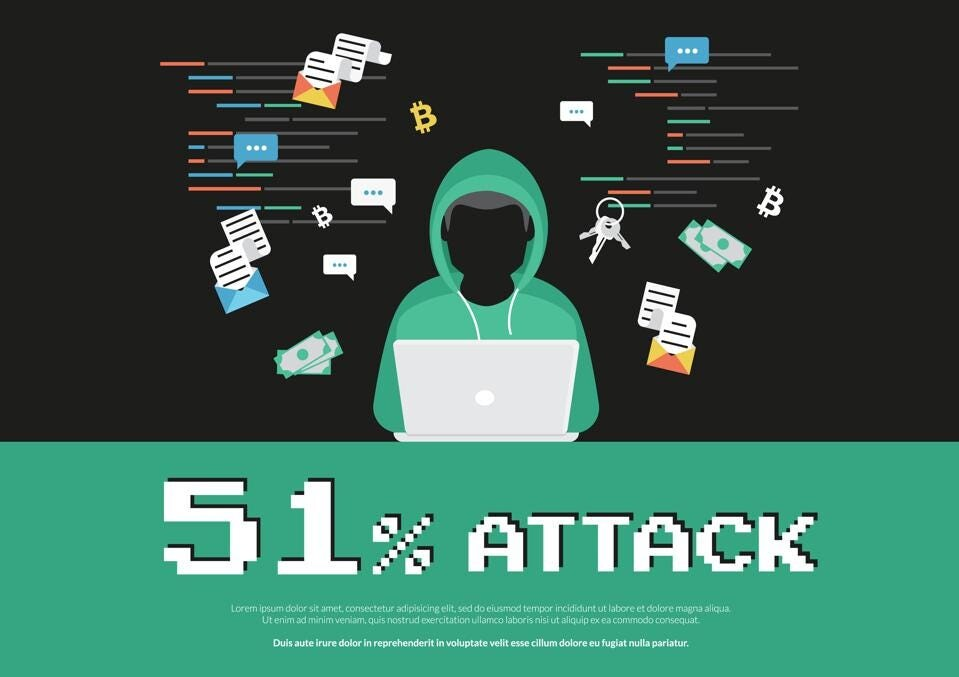
So, What Can We Take From This?
Overall, blockchains could potentially have a huge effect on industries all over the planet. With the largest financial players in the world pouring crazy sums of investments into the space, you’d like to think they would have done their research beforehand. The current market size for blockchain is estimated to be about 5 billion; with expectations of 70 billion by 2026. I’m sure you’ll agree that's considerable growth. It’s definitely a space that’s worth keeping an eye on as it’s producing some of the most exciting and lucrative opportunities available.
However, like with any innovative technology, there will be ‘teething’ problems. At its current stage, there are certainly improvements needed for any hope of more mainstream adoption. But with amazingly innovative minds working extremely hard, with deep pockets behind them, stranger things have happened. Imagine holding an iPhone when landlines were all that existed…or even before that!
All in all, we're very excited to see where this might lead, and although it will be a very difficult transfer, given the state of today's political world, it will be a great achievement to see a successfully decentralised, more transparent future for us all. If you’re interested in a more visual explanation of this topic, I would heavily recommend this great, short 5 minute video.
Like what you've read or want more like this? Let us know! Email us here or DM us: Twitter, LinkedIn, Facebook, we'd love to hear from you.


